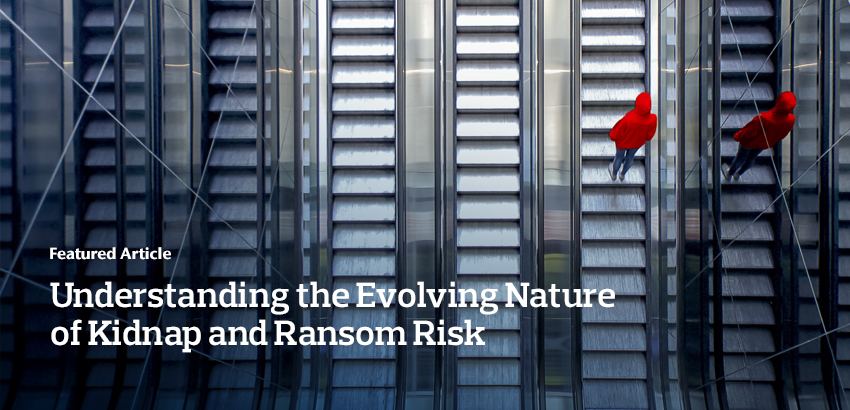
The Rise of Cryptocurrency-Related Kidnappings: A Growing Concern
In recent weeks, France has seen a disturbing increase in kidnappings associated with the cryptocurrency sector. These incidents, which include violent ransom demands, underscore the urgent need for enhanced security measures for individuals involved in this rapidly expanding industry. The alarming trend highlights not only the vulnerabilities of cryptocurrency stakeholders but also the broader implications for security in an increasingly digital financial landscape.

The cryptocurrency market has now surpassed $3 trillion, making it an attractive target for criminal activities. Recent reports indicate a series of kidnappings in France, including one involving an attempted abduction of a cryptocurrency executive's family. As the market grows, the wealth associated with cryptocurrencies becomes a beacon for criminals, prompting a reevaluation of security protocols for those in the industry.
French Interior Minister Bruno Retailleau has emphasized the necessity for collaboration between law enforcement and the cryptocurrency community to develop effective security strategies. "The rise in kidnappings illustrates the need for more robust security frameworks that can protect individuals involved in crypto," Retailleau stated, highlighting the government's commitment to addressing this pressing issue.
Key Facts
- Recent kidnappings include an attempted abduction of a cryptocurrency executive's family.
- The cryptocurrency market has surpassed $3 trillion, attracting criminal attention.
- French Interior Minister Bruno Retailleau emphasizes collaboration between law enforcement and the cryptocurrency community for effective security strategies.
- Experts suggest integrating advanced security technologies and fostering community initiatives to mitigate risks.
The Intersection of Wealth and Vulnerability
The burgeoning cryptocurrency market has attracted a diverse range of investors and stakeholders, from individual users to high-profile executives. This diversity, while beneficial for the market's growth, has also led to heightened vulnerability. Criminals are increasingly sophisticated, employing tactics that not only target financial gain but also leverage psychological manipulation and violence.
In light of these threats, security experts recommend adopting advanced technologies such as biometric authentication, multi-signature wallets, and secure custody solutions to protect assets. "As new threats emerge, the cryptocurrency community must adopt a proactive approach to security," commented security analyst Julie Thompson. "Investors and executives need to prioritize their safety alongside their financial interests."
Growing Criminal Attention
The rise in cryptocurrency-related kidnappings reflects a broader trend of increased criminal attention toward the digital asset sector. A recent report by the French National Police indicated that such crimes have tripled in the past year, correlating with the rapid increase in cryptocurrency adoption.
This trend is not exclusive to France; other countries are also witnessing similar spikes in cryptocurrency-related crimes. For instance, in the United States, reported cases of extortion and kidnapping linked to cryptocurrency holdings have raised alarms among law enforcement agencies, prompting them to issue warnings to investors about the potential risks involved.
The Role of Law Enforcement
In response to rising threats, law enforcement agencies are adjusting their strategies to tackle cryptocurrency-related crimes more effectively. Collaboration is key—law enforcement agencies are partnering with tech companies and cryptocurrency exchanges to share intelligence and develop preventative measures.
Minister Retailleau has urged cooperation between the two sectors: "By working together, we can create a safer environment for cryptocurrency stakeholders. The government and the industry must unite to combat these crimes."
Community Initiatives and Security Technologies
Experts suggest adopting a multi-faceted approach to mitigate risks associated with cryptocurrency wealth. This includes investing in community initiatives that foster awareness and education about security measures. Community-led programs can play a significant role in empowering individuals to protect their assets and personal safety.
Additionally, integrating advanced security technologies is crucial. Biometric authentication methods, such as facial recognition and fingerprint scanning, can provide an extra layer of protection for cryptocurrency wallets. Moreover, utilizing multi-signature wallets, which require multiple private keys to authorize a transaction, can significantly reduce the risk of theft.
Conclusion
As the cryptocurrency market continues to expand, the rising trend of related kidnappings poses serious challenges to the security of stakeholders. The intersection of wealth and vulnerability in the cryptocurrency sector necessitates proactive measures from both law enforcement and the community. By fostering collaboration, implementing advanced security technologies, and increasing public awareness, stakeholders can help create a safer environment in this rapidly evolving digital financial landscape.
The urgency of the situation cannot be overstated. Investors and executives in the cryptocurrency industry must remain vigilant and proactive in implementing security measures to protect themselves from potential threats. As the market grows, so does the need for a robust security framework that can adapt to the challenges of this dynamic environment.
For more information on the trends in cryptocurrency-related crimes, refer to the Guardian.

